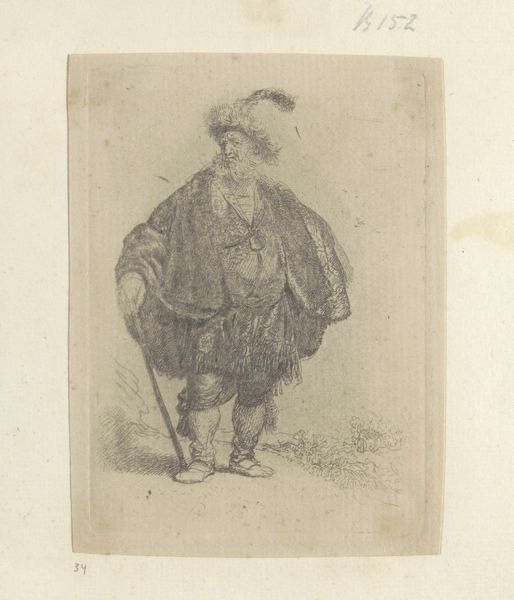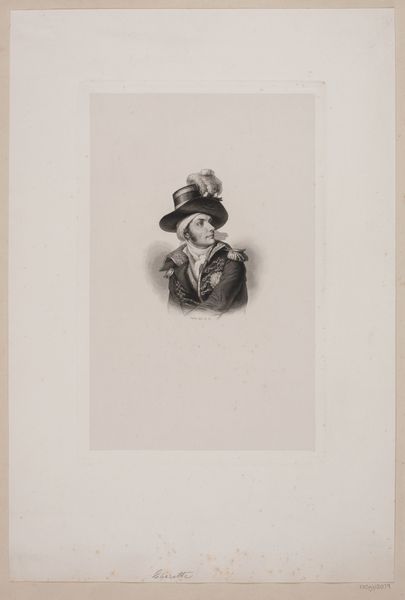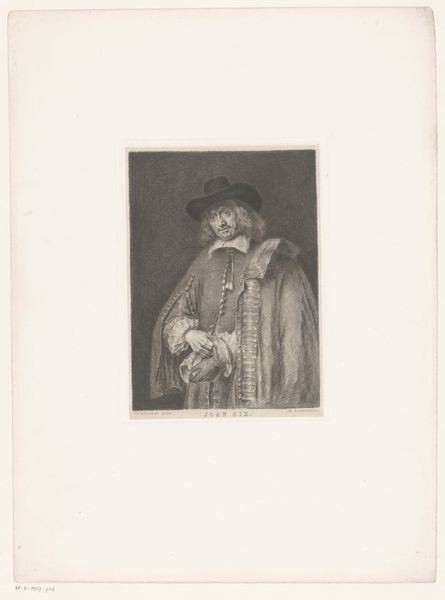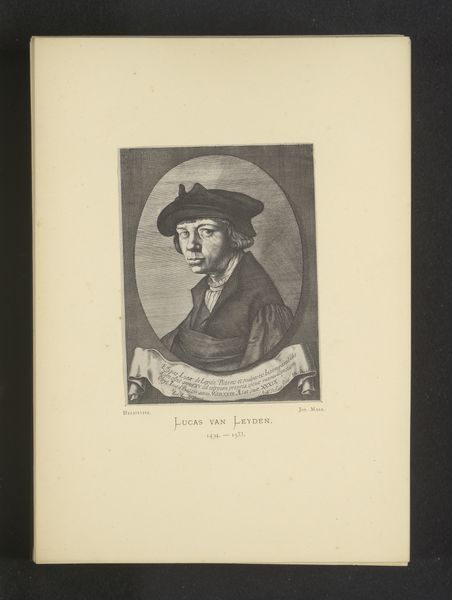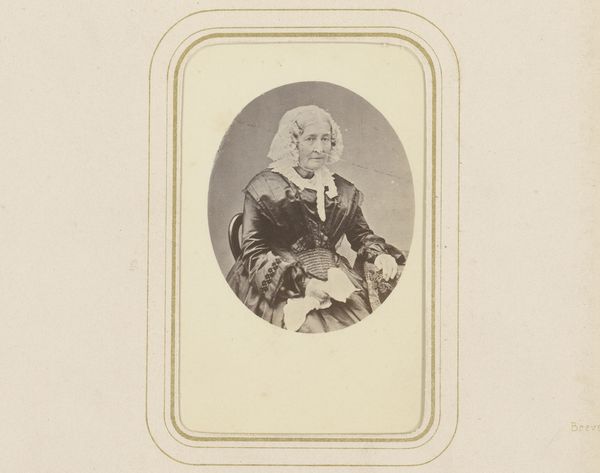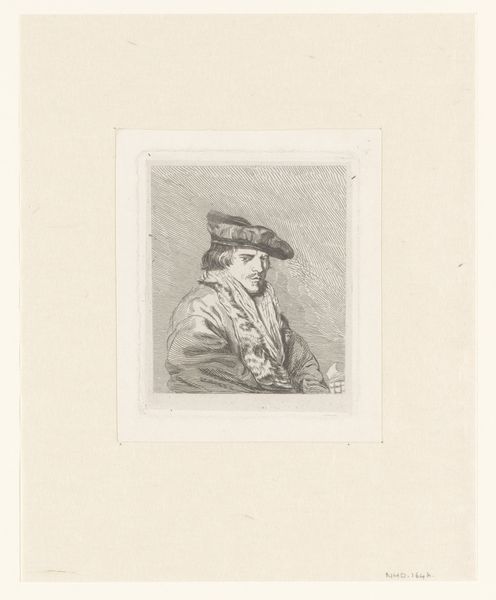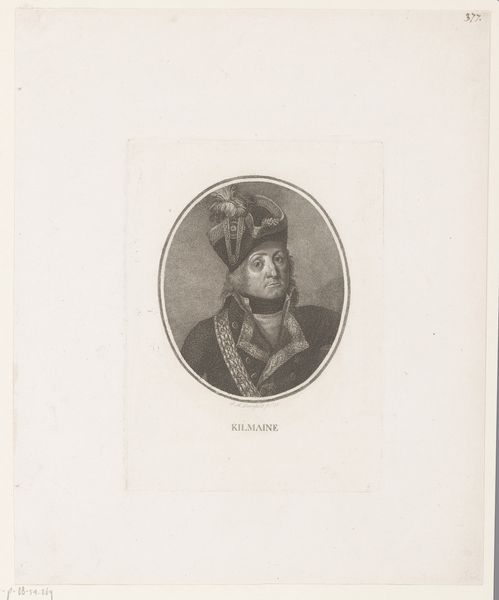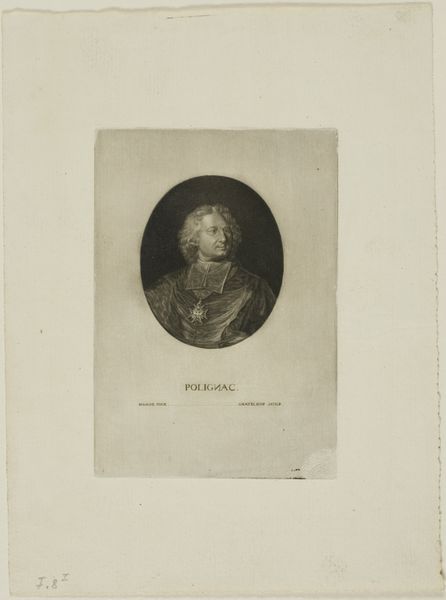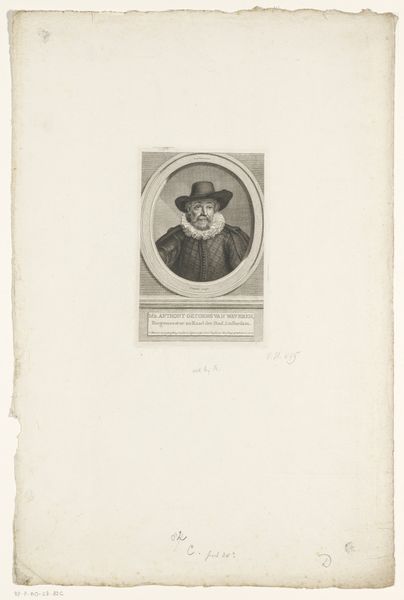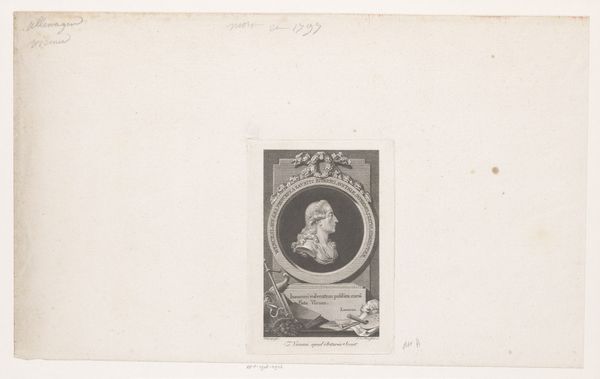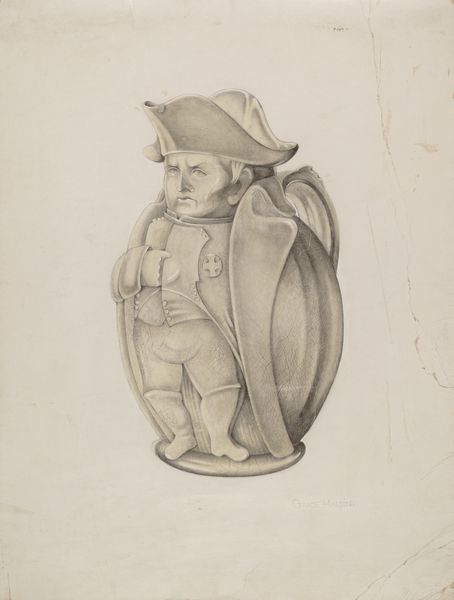
Zelfportret met hoed met slappe rand en geborduurde mantel 1801 - 1808
0:00
0:00
print, etching
#
portrait
#
self-portrait
# print
#
etching
#
romanticism
#
realism
Dimensions: height 146 mm, width 132 mm
Copyright: Rijks Museum: Open Domain
Curator: Here we have an etching titled "Zelfportret met hoed met slappe rand en geborduurde mantel," or Self-Portrait with a Soft Cap and Embroidered Coat, by Ignace-Joseph de Claussin, likely created between 1801 and 1808. It's currently held at the Rijksmuseum. Editor: There’s something incredibly vulnerable in that direct gaze. Even though he’s adorned in what seems to be rich clothing, his eyes communicate a raw honesty. The soft hat casts a shadow, adding a sense of introspection. Curator: Interesting you pick up on the clothing; the very fact that this is a print—an etching, meant to be reproduced and circulated—gives us insight into De Claussin’s material world. We have here the tools and labor used to produce the image as a commodity for a specific viewership, perhaps those with the means to collect such portraiture. Editor: Yes, and each article of clothing in the portrait contains information about status and belonging, too. The soft hat with its shadow suggests a scholarly life, maybe artistic, perhaps a sense of romantic isolation associated with those roles? While the embroidered coat points towards wealth. And that elaborate collar hints at his self-assured place within the culture of the time. Curator: The choice of etching is crucial to the piece, offering a look at process and material distribution. It democratized self-representation and, by that matter, questions authorship. Think about how printmaking enabled ideas and likenesses to be shared widely during this period, influencing self-fashioning across social classes. Editor: And I wonder, too, about the psychology of self-representation, even self-mythologizing at play here. An individual controls their narrative when making such images. But does the artist present their aspirational identity or perhaps a realistic vision? Curator: It makes you think about consumption patterns during the time. Who would collect a self-portrait of de Claussin, and what value would it hold for them? This provides interesting ideas about art history that break free from focusing only on "artistic genius." Editor: Agreed. There’s something very haunting about witnessing someone attempting to project their being across generations via carefully chosen symbolic garments. What a complex thing, an artistic gesture. Curator: Well, that’s another layer to consider when observing pieces such as this one, its effect on time and beyond its mere visual. Editor: Absolutely, a great way to ponder over identity, labor and legacy here in our museum.
Comments
No comments
Be the first to comment and join the conversation on the ultimate creative platform.
